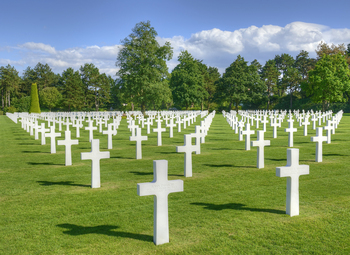
World War Two
World War Two involved everyone – every person, every business and every service was involved. Britain did not fight alone. The war involved 61 countries. It is estimated that 60 million people lost their lives and hundreds of millions were injured.
After World War One ended in 1918, Germany had to give up land and was banned from having armed forces. In 1933, the German people voted for a leader named Adolf Hitler, who led a political party in Germany called the National Socialists or Nazis. Hitler promised to make his country great again and quickly began to arm Germany again and seize land from other countries. Shortly before 5am on Friday the 1st of September, 1939, German forces stormed the Polish frontier. Tanks and motorised troops raced into the country over ground, supported by Stuka dive bombers overhead. A total of 1.2 million German soldiers swept into Poland.
Neville Chamberlain resigned as Prime Minister in May 1940 and was replaced by Winston Churchill. In the dark, early days of the Second World War Churchill had few real weapons. He attacked with words instead.
World War Two was fought between two groups of countries. On one side were the Axis Powers, including Germany, Italy and Japan. On the other side were the Allies. They included Britain, France, Australia, Canada, New Zealand, India, the Soviet Union, China and America.
Japan wanted to control Asia and the Pacific. In 1937 Japan attacked China.
By 1943 the Allies were winning. One reason was that Allied factories were building thousands of tanks, ships and planes. In 1944, a huge Allied army crossed from Britain to liberate (free) France. Then Allied armies invaded Germany. On the 8th of May 1945 the war in Europe was over, the Allies accepted Germany’s surrender and about a week after that Adolf Hitler committed suicide.
The Pacific war went on until August 1945. There was fierce fighting on Pacific islands and big naval battles at sea. Finally, the Allies dropped atomic bombs on two Japanese cities, Hiroshima and Nagasaki. The damage was so terrible that Japan surrendered. World War Two had ended.
Timeline

Activities
- Find out by asking family or local members of the community about people they know who fought in the war and research the impact it had on your village or community.
- It’s the evening of the 3rd of September 1939, you have just heard that War has broken out. Write a diary entry documenting your thoughts and feelings.













 This project has been funded with support from the European Commission.
This project has been funded with support from the European Commission.